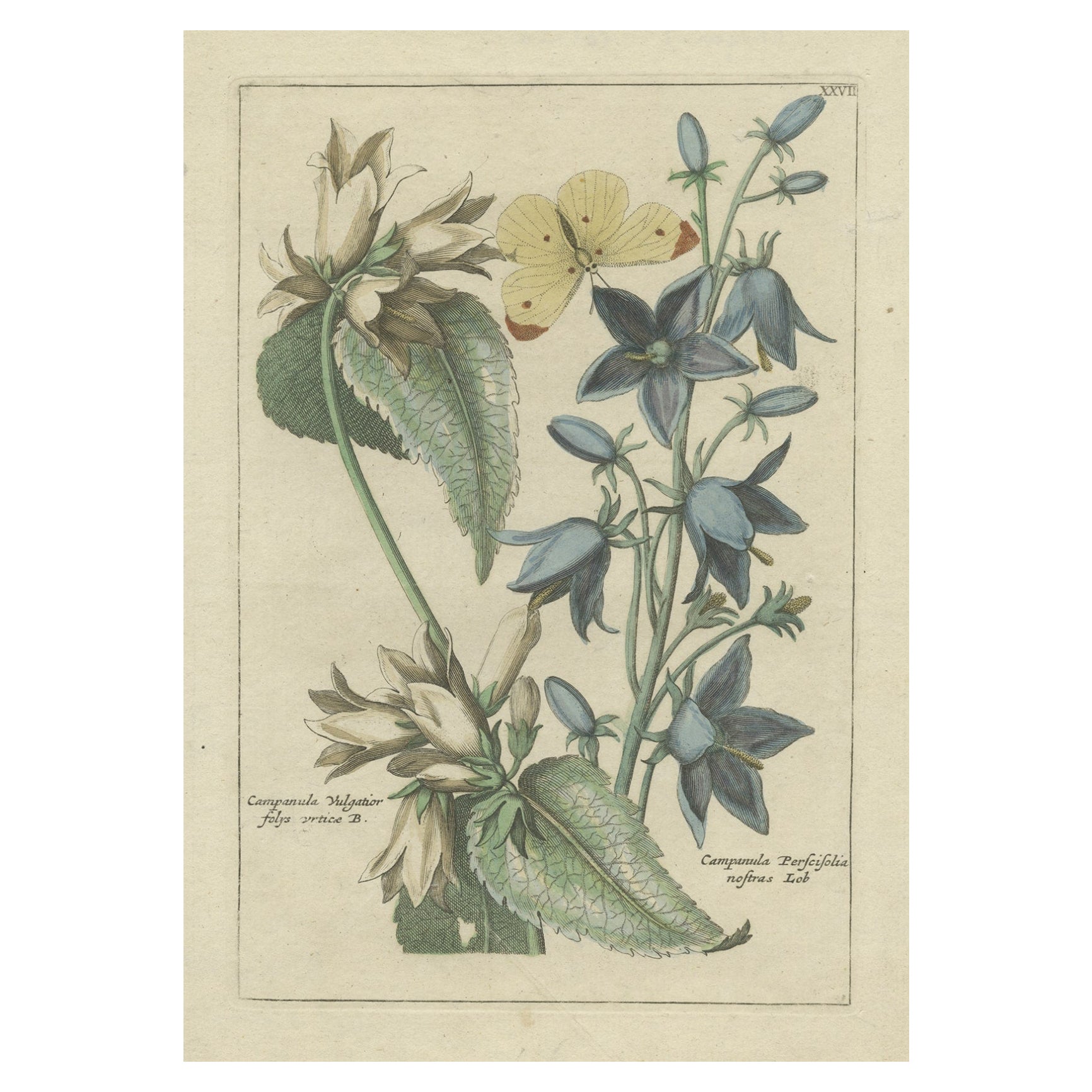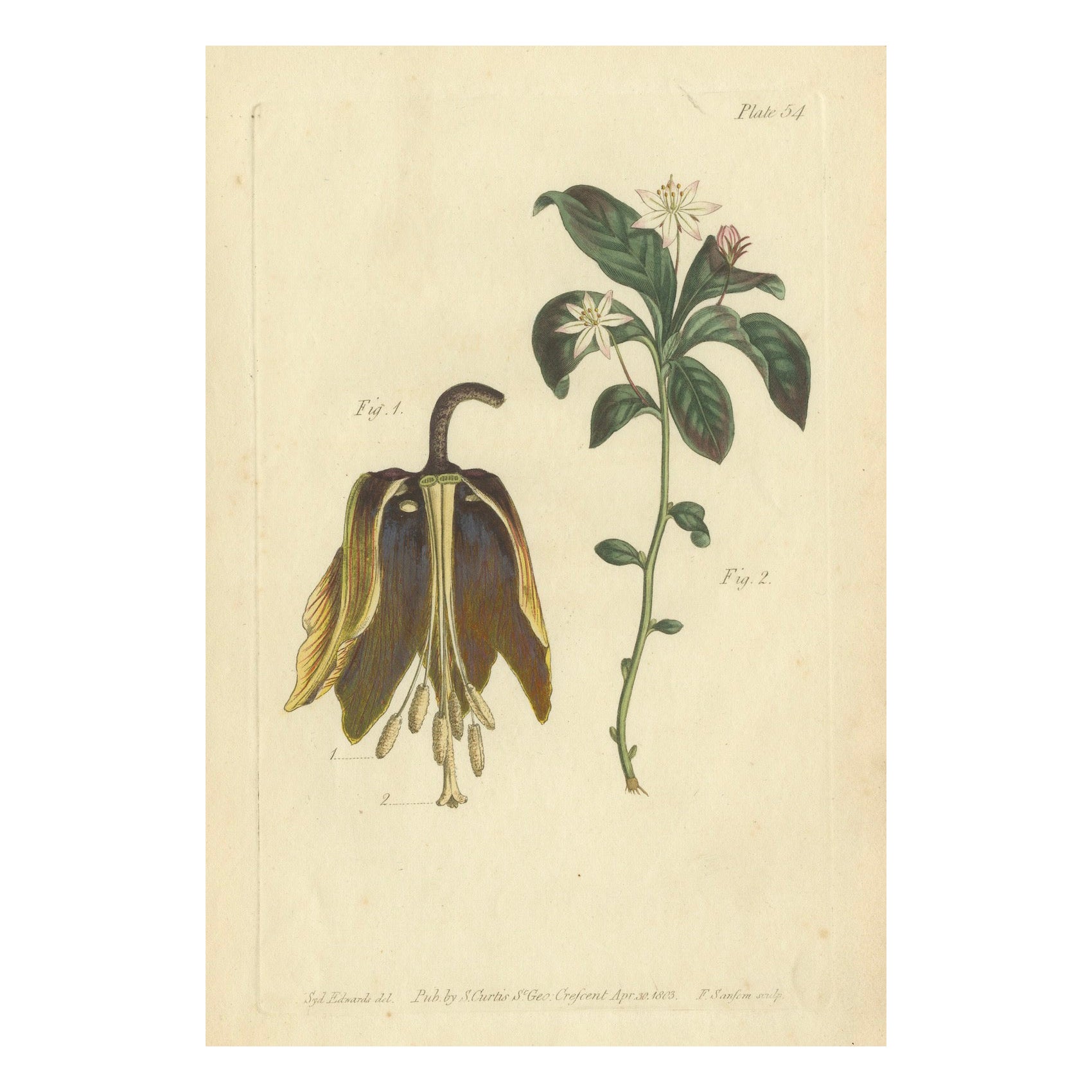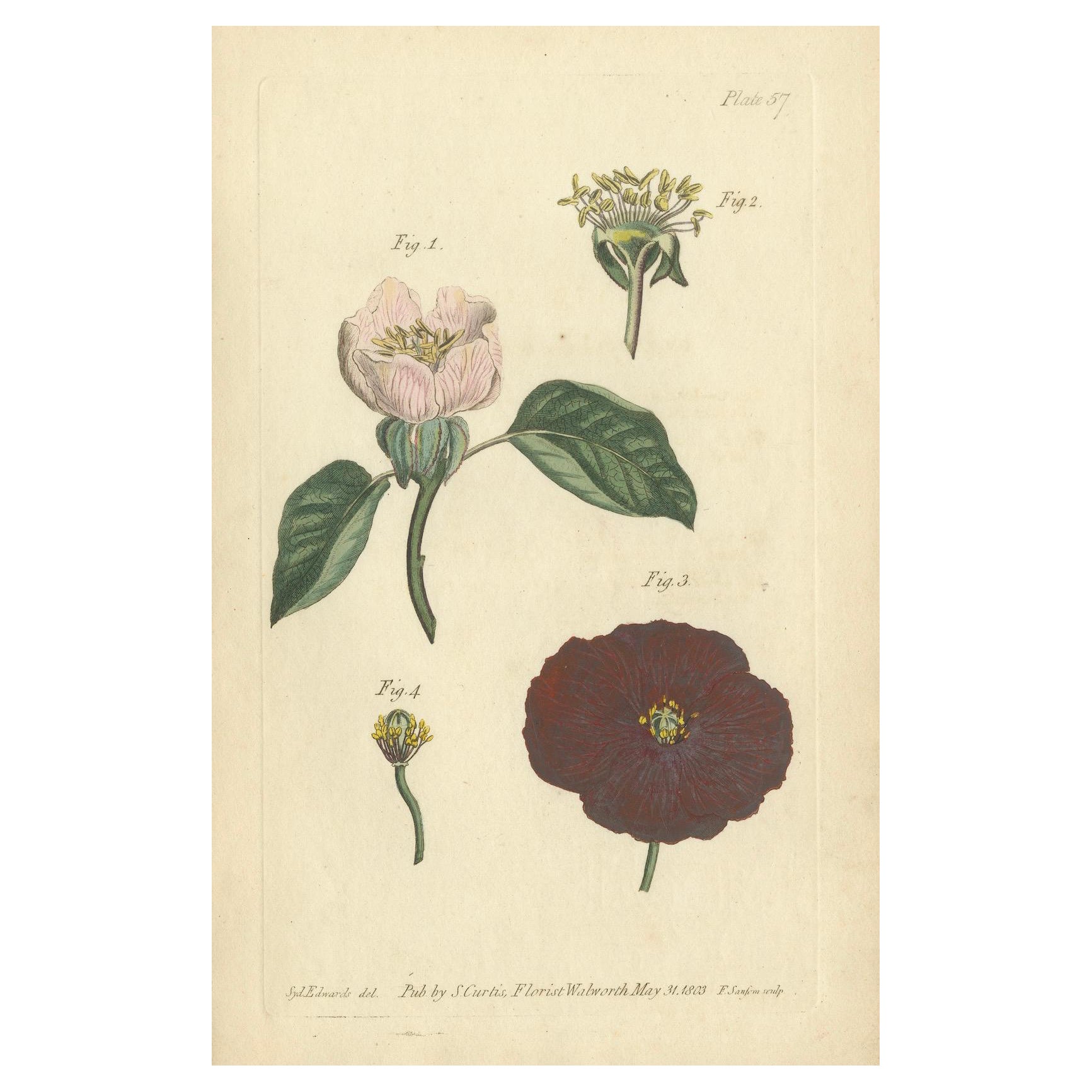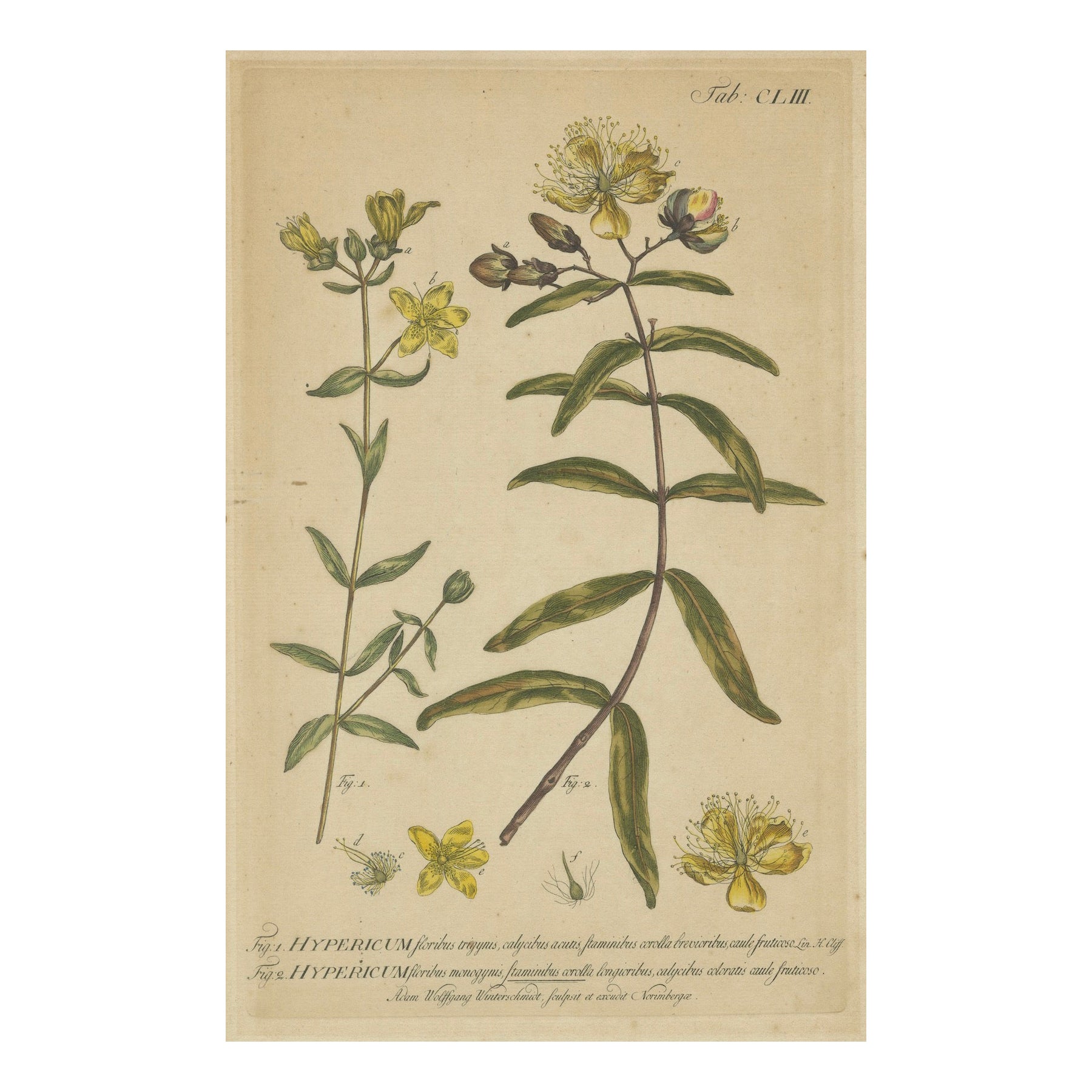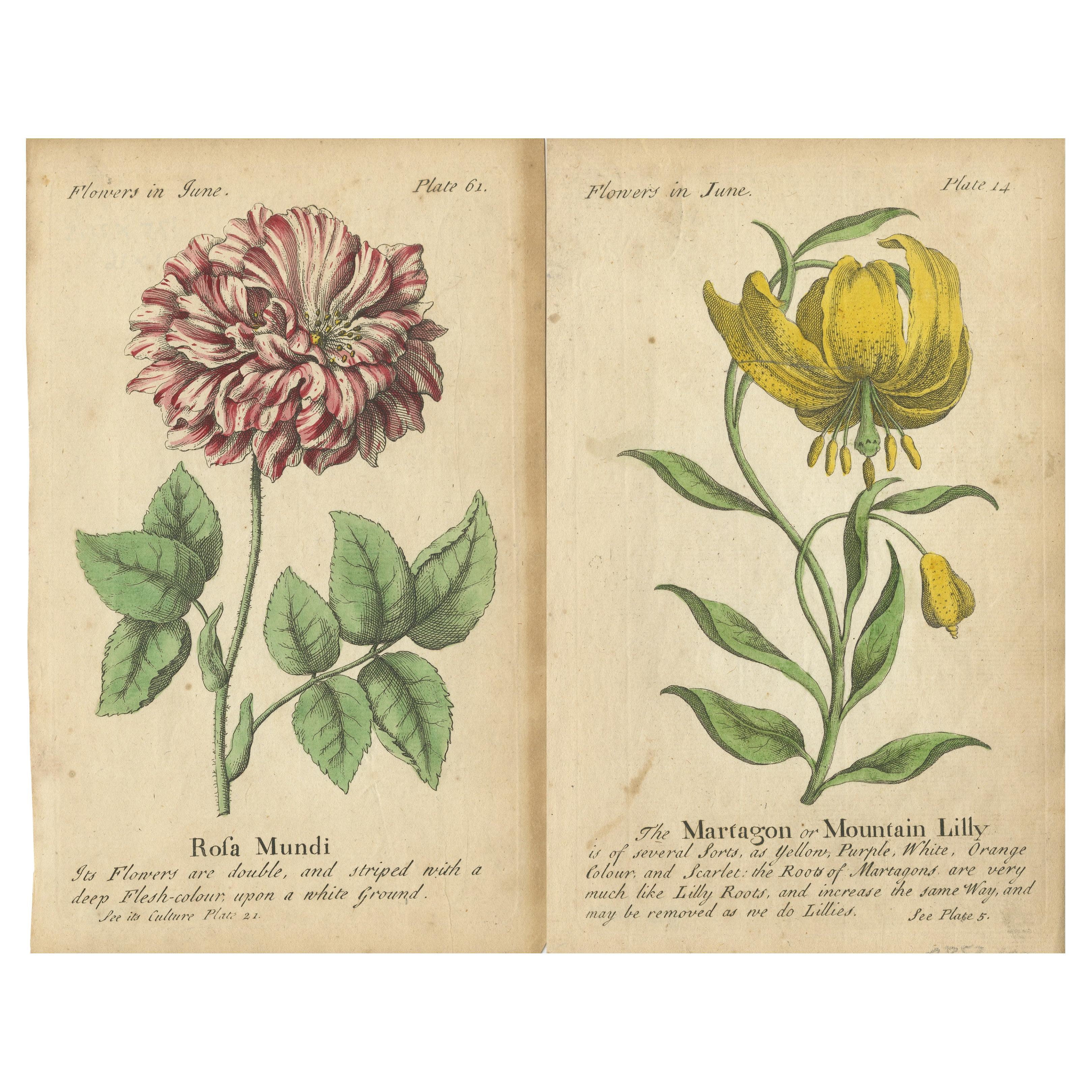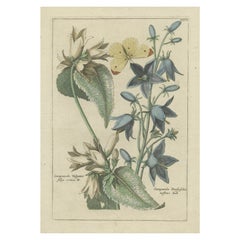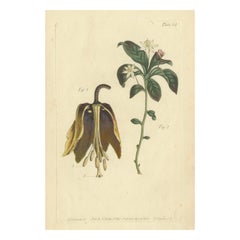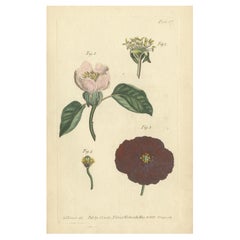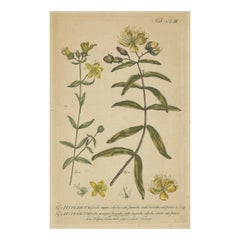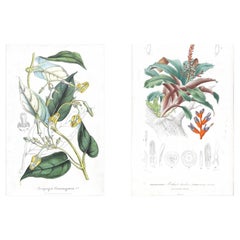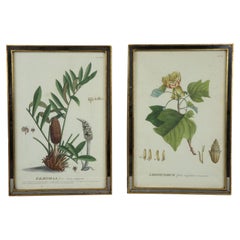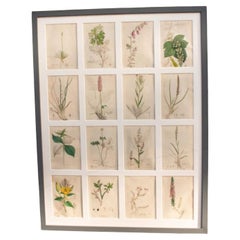Items Similar to Botanical Engravings: Morning Glory and Virginian Honeysuckle by Ehret, 1760
Want more images or videos?
Request additional images or videos from the seller
1 of 11
Botanical Engravings: Morning Glory and Virginian Honeysuckle by Ehret, 1760
$527.18per set
$658.98per set20% Off
£392.45per set
£490.57per set20% Off
€440per set
€550per set20% Off
CA$722.11per set
CA$902.64per set20% Off
A$803.14per set
A$1,003.93per set20% Off
CHF 419.38per set
CHF 524.22per set20% Off
MX$9,773.40per set
MX$12,216.75per set20% Off
NOK 5,356.08per set
NOK 6,695.09per set20% Off
SEK 5,023.05per set
SEK 6,278.82per set20% Off
DKK 3,349.57per set
DKK 4,186.96per set20% Off
Shipping
Retrieving quote...The 1stDibs Promise:
Authenticity Guarantee,
Money-Back Guarantee,
24-Hour Cancellation
About the Item
The engravings are from 1760 and depict botanical illustrations of flowers. Note: They are not framed yet. The hand-coloring is original from 1760.
Here are the details of the flowers and the maker:
1. Convolvulus Septimius flore cyaneo, also known as "Hell blau Winde."
- The illustration shows a plant with blue morning glory flowers, which are depicted with a striking star-like pattern in the center.
2. Periclymenum perfoliatum Virginianum semper virens florens, also known as "Das Virginianische Geißblatt, Hochblühge."
- The illustration shows a plant with red honeysuckle flowers, which have tubular shapes hanging in clusters.
- The engravings are attributed to Georg Dionysius Ehret, a renowned botanical illustrator of the 18th century.
These detailed and scientifically accurate illustrations were crucial for botanical studies during that period, showcasing the beauty and structure of various plant species.
More about the maker:
Georg Dionysius Ehret (1708-1770) was a highly influential German botanical illustrator and botanist. Here are some key points about his life and work:
Early Life and Career:
- **Birth and Background:** Ehret was born in Heidelberg, Germany, in 1708. He initially trained as a gardener, which provided him with a strong foundation in plant knowledge.
- **Initial Work:** His early work involved creating botanical illustrations for local gardens, and he quickly gained a reputation for his exceptional artistic skills.
Contributions to Botany:
- **Innovative Techniques:** Ehret was known for developing a unique and innovative style of botanical illustration. He employed a systematic approach to drawing plants, often dissecting them to show detailed structures.
- **Collaboration with Notable Botanists:** He collaborated with several prominent botanists of his time, including Carl Linnaeus, the father of modern taxonomy, and Dr. John Martyn, an English botanist.
- **Publications:** His illustrations were featured in many important botanical publications, such as Linnaeus's "Hortus Cliffortianus" and Martyn's "Historia Plantarum Rariorum." His own publication, "Plantae et Papiliones Rariores," showcased his exquisite illustrations of rare plants and butterflies.
Style and Impact:
- **Artistic Style:** Ehret's illustrations are characterized by their clarity, precision, and beauty. He often used a combination of watercolor and gouache, with fine lines and careful attention to detail.
- **Legacy:** Ehret's work played a crucial role in the advancement of botanical science. His illustrations were not only artistically impressive but also scientifically accurate, helping botanists classify and understand plant species better.
- **Influence:** His style set a standard for botanical illustration that influenced many artists and botanists after him. His legacy continues to be celebrated in botanical art and science.
Later Life and Recognition:
- **Recognition:** Ehret received considerable recognition during his lifetime, including being elected a Fellow of the Royal Society in London in 1757.
- **Death:** He continued his work until his death in 1770, leaving behind a significant body of work that remains highly regarded in both botanical and art circles.
Georg Dionysius Ehret's contributions to botanical illustration have left an indelible mark on the field, combining artistic mastery with scientific accuracy to create works that continue to be admired and studied.
- Dimensions:Height: 13.23 in (33.6 cm)Width: 9.45 in (24 cm)Depth: 0.01 in (0.2 mm)
- Sold As:Set of 2
- Materials and Techniques:Paper,Engraved
- Period:1760-1769
- Date of Manufacture:1760
- Condition:Condition: very good, given age. Engraving / handcoloured on Handlaid (verge) paper with watermark. General age-related toning and/or occasional minor defects from handling. One engraving shows more light foxing. Please study scan carefully.
- Seller Location:Langweer, NL
- Reference Number:Seller: BG-13747-8, BG-13747-91stDibs: LU3054340395762
About the Seller
5.0
Recognized Seller
These prestigious sellers are industry leaders and represent the highest echelon for item quality and design.
Platinum Seller
Premium sellers with a 4.7+ rating and 24-hour response times
Established in 2009
1stDibs seller since 2017
2,508 sales on 1stDibs
Typical response time: <1 hour
- ShippingRetrieving quote...Shipping from: Langweer, Netherlands
- Return Policy
Authenticity Guarantee
In the unlikely event there’s an issue with an item’s authenticity, contact us within 1 year for a full refund. DetailsMoney-Back Guarantee
If your item is not as described, is damaged in transit, or does not arrive, contact us within 7 days for a full refund. Details24-Hour Cancellation
You have a 24-hour grace period in which to reconsider your purchase, with no questions asked.Vetted Professional Sellers
Our world-class sellers must adhere to strict standards for service and quality, maintaining the integrity of our listings.Price-Match Guarantee
If you find that a seller listed the same item for a lower price elsewhere, we’ll match it.Trusted Global Delivery
Our best-in-class carrier network provides specialized shipping options worldwide, including custom delivery.More From This Seller
View AllAntique Hand-Colored Flower Print of Campanula Plants, 1794
By J.B. Elwe
Located in Langweer, NL
Untitled antique botany print of Campanula vulgatior and Campanula perscifolia, two campanula plants. This print originates from 'Nederlandsch Bloemwerk' by J.B. Elwe. This work show...
Category
Antique 18th Century Prints
Materials
Paper
$230 Sale Price
20% Off
Antique Botanical Print of Banana Shrub and Starry Wild Jasmine, 1803
Located in Langweer, NL
Title: Antique Botanical Print of Banana Shrub and Starry Wild Jasmine, 1803
This title accurately reflects the plant subjects depicted in the illustration: the Banana Shrub (Fig. 1, showing the seed pod) and the Starry Wild Jasmine (Fig. 2, showing the flower in bloom).
This antique engraving from April 23, 1803, beautifully illustrates two botanical figures, emphasizing the natural beauty and complexity of plant life. Here's what makes these illustrations unique and special:
1. Botanical Detail: Fig. 1 shows a plant section with a dark, almost wilted appearance, possibly representing the fruiting body or a seed pod, which contrasts with the lively and vibrant Fig. 2, depicting a flower in bloom. This juxtaposition captures both the end and the beginning of life cycles in the plant kingdom, showcasing the botanical accuracy and attention to detail that was essential in early scientific illustrations.
2. Artistic Technique: The illustration is a fine example of handcolored copperplate engraving, a method that requires exceptional skill. This technique allows for precise details and subtle gradations of color, qualities that make antique botanical prints highly valued by collectors and art enthusiasts alike.
3. Historical and Educational Value: Published by W. Curtis at St. George Crescent in 1803, this work is part of a larger series that aimed to educate and inform about the diversity of plant species. Such prints are crucial for understanding how plants were studied and classified in the early 19th century, providing insight into the history of botany and scientific illustration.
4. Collectibility: Due to their age, artistic merit, and the detailed craftsmanship, prints like these are sought after by collectors of antique botanical art...
Category
Antique Early 1800s Prints
Materials
Paper
$134 Sale Price
20% Off
Antique Botanical Engraving of Apple Blossom and Mallow - 1803 Floral Print
Located in Langweer, NL
Antique Botanical Engraving of Apple Blossom and Mallow - 1803 Floral Print by Samuel Curtis
This engraving is from "The Botanical Magazin...
Category
Antique Early 1800s Prints
Materials
Paper
$134 Sale Price
20% Off
Exquisite 1755 St. John's Wort Botanical Engraving by Philip Miller
Located in Langweer, NL
A copper engraving of Hypericum plants, commonly known as St. John's Wort, from Philip Miller's influential work, *Figures of the Most Beautiful, Useful and Uncommon Plants Described...
Category
Antique 1750s Prints
Materials
Paper
$210 Sale Price
20% Off
Convolvulus Jalapa Botanical Engraving - Icones Plantarum Medicinalium, 1788
Located in Langweer, NL
"Convolvulus Jalapa Botanical Engraving - Icones Plantarum Medicinalium, 1788"
Description
This hand-colored engraving presents the Convolvulus Jalapa, commonly known as the Jalap b...
Category
Antique 1780s Prints
Materials
Paper
$277 Sale Price
20% Off
Antique Print of the Mountain Lily and Rosa Mundi, 1747
By J. Duke
Located in Langweer, NL
Antique flower print titled 'The Martagon or Mountain Lilly' and 'Rosa Mundi'. These prints originate from 'The Compleat Florist' by J. Duke.
Category
Antique Mid-18th Century English Prints
Materials
Paper
$335 Sale Price / set
20% Off
You May Also Like
Set of Two Rare Botanical Engravings by D’Orbigny — 1849
Located in Fukuoka, JP
Set of Two Rare Botanical Engravings by D’Orbigny — Dictionnaire Universel d’Histoire Naturelle, Paris, 1849
An exquisite pair of original hand-colored botanical engravings from the...
Category
Antique 19th Century French Prints
Materials
Paper
Two 18th Century Hand Colored Botanical Engraving of Plants from (1771)
Located in Stockholm, SE
Adorning the walls, two gracefully framed botanical engravings from 1771 capture nature's elegance in exquisite detail. Delicate strokes of...
Category
Antique 1770s European George III Decorative Art
Materials
Paper
Pair Of Antique Hand Colored Botanical Prints
Located in Bridgeport, CT
Taken after “La Botanique Mise a la Portee de Tout le Monde”, originally published in Paris 1774-1780, written by Nicolas Francois Regnault and illustrated by his wife, Genevieve de ...
Category
Antique 19th Century Country Prints
Materials
Glass, Wood, Paper
$2,250 / set
18th century James Sowerby botanical Engravings
By James Sowerby
Located in Seaford, GB
Rare Antique Botanical Prints by James Sowerby (1757–1822): A Timeless Tribute to British Flora
Step into the enchanting world of 18th-century botanical artistry with our exceptiona...
Category
Antique 1790s British Georgian Prints
Materials
Paper
$3,563 / set
Set of Three Hand Colored Copper Wheel Engraved Floral Prints by John Hill c1756
Located in valatie, NY
Set of Three Hand Colored Copper Wheel Engraved Floral Prints by John Hill c1756. One print signed in the plate, "I Hill." Published in England and hand colored. From an edition of 6...
Category
Antique Mid-18th Century English George III Prints
Materials
Paper
Large Pair of Original Antique Botanical Prints, Dated 1838
Located in St Annes, Lancashire
Wonderful pair of botanical prints.
Lithographs by Alfred Adlard
After C.W Harrison
Original hand color
Published, 1838
Unframed.
The me...
Category
Antique 1830s English Chinoiserie Prints
Materials
Paper
More Ways To Browse
Spanish Oak Buffet
Spode Bone China
Sterling Silver Letter Holder
Tale Of Genji
Tall Bureau
Tall Narrow Display Cabinet
Tall Wine Cabinet
Tester Bed
Tibet Coral
Tobacco Basket Antique
Tropical Monkey
Us Navy Antiques
Used Furniture Anchorage
Val Saint Lambert Crystal Blue
Victorian Door Stop
Vintage 40s Bedroom Set
Vintage Boy Toys
Vintage Drum Seat
